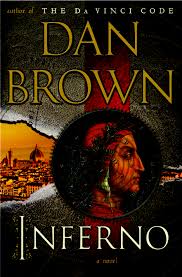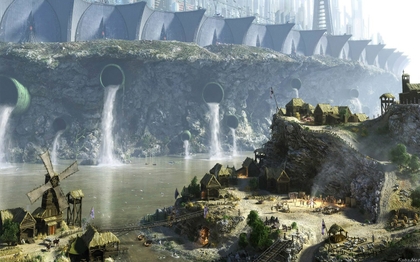 My thoughts on marriage are what you call ‘a glass-half empty,’ the scope of marriage like a cone, open and wide at the start but narrowing as time passes, which, subsequently, outlines the majority of novels about marriages. Rarely do I read books from this sub-genre in Adult Fiction because these novels, more often than not, transfigure married couples into conjoined twins, making them a unit instead of two, separate beings. Sure, they may care deeply for the other—definitions varying—but the affection or adoration end up substituting for a spouse lacking identity or agency (aka, codependency.) What a relief it was to read Lauren Groff’s Fates and Furies, a hard yet unique take that analyzes more than a marriage but who these people were before they collided, a meeting that feels destined in many ways but, alas, isn’t. Fates and Furies deploys not tricks but filters, letting us watch a rosy-colored landscape transform into a storm. Fates and Furies is way more interested in unraveling the effects of past circumstances, fortunate or traumatic, and in handling life in motion, when changing practically goes against everything learned, our experiences as teachers. Maybe there is no change, no transformation at all. Even in love, do we change or do we escape?
My thoughts on marriage are what you call ‘a glass-half empty,’ the scope of marriage like a cone, open and wide at the start but narrowing as time passes, which, subsequently, outlines the majority of novels about marriages. Rarely do I read books from this sub-genre in Adult Fiction because these novels, more often than not, transfigure married couples into conjoined twins, making them a unit instead of two, separate beings. Sure, they may care deeply for the other—definitions varying—but the affection or adoration end up substituting for a spouse lacking identity or agency (aka, codependency.) What a relief it was to read Lauren Groff’s Fates and Furies, a hard yet unique take that analyzes more than a marriage but who these people were before they collided, a meeting that feels destined in many ways but, alas, isn’t. Fates and Furies deploys not tricks but filters, letting us watch a rosy-colored landscape transform into a storm. Fates and Furies is way more interested in unraveling the effects of past circumstances, fortunate or traumatic, and in handling life in motion, when changing practically goes against everything learned, our experiences as teachers. Maybe there is no change, no transformation at all. Even in love, do we change or do we escape?
The narrative of Fates and Furies is divided into two sections in the form of the characters’ perspectives, Lancelot (Lotto) and Mathilde, that it invents a kind of dichotomy between fantasy and reality. Named after the Arthurian knight, Lotto is immediately treated as the golden child who will achieve greatness. He’s the son of a billionaire in Florida, loved by an uncomfortably, doting, religious mother, and afforded every kind of opportunity available. Already Groff tosses out any kind of standards of normalcy; Lotto’s life far exceeds that of the average person, but it’s not without its hardships. The sudden death of his father pivots the story to shift from its sunny outlook to Lancelot’s turbulent teenage years in falling in with the wrong crowd, being shipped off to Boarding school, and having been sexually molested by his teacher for two seconds to eventually going off to college, partying, man-whoring himself to all the women on campus, achieving success in his college’s theater, and meeting his future wife, Mathilde. Lotto’s story escalates, from a lost soul to—what everyone saw at the start—greatness, a playwright, becoming a visionary overnight without ever written a story in his life. Lotto is someone you rarely meet and know because he’s hardly ever exposed to the underbelly of poverty, hate, and rejection. He was raised with an endless supply of love, adoring affection, and is virtually clean of faults, besides his level of ignorance, but making his story, his comprehension of people and relationships, hard to stomach. He’s someone everyone loves, but is incredibly daft and self-absorbed. His narration is irascible to read, even hard when he starts to mansplain at a conference after a commenter asks him about domesticating women in favor of supporting men’s ambition (even though it’s the most pointed, out-of-place moment in the novel.) Groff’s characterization of Lotto is perhaps exaggerated, but hard to read when we’re unfeeling of his circumstances and fortunes, that the first half the novel is too surreal to believe, with Mathilde aiding in creating this illusion.
Stated in Fates and Furies, Mathilde is truly the “interesting one”. Lotto’s narcissism lends to building a mystic around Mathilde, who does everything to maintain the status quo and supports his career, but any attentive reader will recognize that beyond her cold veneer is something more loose and shrewd. Mathilde’s story starts early like Lotto’s but is unsettled with tragedy from the moment she ostensibly lets her baby, brother fall down the steps, thus, breaking his neck. From there, Mathilde’s parents send her away believing she’s innately, emotionally disturbed. After living with her grandma and then with her uncle and never having friends, she is employed by a man named Ariel, with singular, sexual preferences, and remains in his services for the next four years to pay for her college tuition (yes, like that novel.) Upon learning of Lotto, Mathilde is quick to orchestrate events for their ‘destined’ meeting. They marry two weeks later. Mathilde is more than a housewife but a person trying to efface the events from her past but, meanwhile, is self-assured and a resilient female character, demonstrating an aptitude in several skills, even in ‘editing’ her husband’s works. We can’t tell though if Mathilde feels ashamed of her history, but we can glean from her twenty-year (ish) marriage, that she didn’t see it as relevant, or at the very least, knew that disclosing this information to Lotto would ruin the image he cultivated of her (suggesting more fear than shame.) By choice, she’s supportive, honestly believing in her husband’s aspirations, and, I believe, truly loves him, but none of that changes what happened to her or who she is. Scorned and abused, Mathilde isn’t one to forgive until she’s dished out some payback, thus, revealing the title of Fury. She’s a character that attempts to rebound from everything that’s done to her, tantamount to the pain inflicted on her (parents abandonment of her = cutting ties with them entirely, for example.) Groff’s portrayal of anger doesn’t demonizes her unlike Amy from Gone Girl, arguably complex but now a case study of sociopathic personality disorder. Mathilde nurtures her appearance, letting Lotto believe what he wants to believe, and she omits the macabre events from her past because, let’s face it, Lotto couldn’t handle it anyway. And how incredibly easy it was for her to do so, especially when her golden-child husband never bothers asking her.
Fates and Furies is zealous with rich images and metaphors found in Lotto’s parentage (Lotto a nickname of Lancelot, Lotto’s father Gawain, and the description of Lotto’s mother as a mermaid [who becomes a whale]), their Shiba Inu named God (we all worship our pets,) and with the parenthetical commentary inserted into the prose like a play to parallel some of the Greek tragedy themes. So much happens beyond the plain of the story-telling that bolsters the story’s subtext and appeal—but there are certainly problems with the prose that make it awkward and difficult to adjust to. Fragmented sentences make up most of the prose with sometimes incomplete thoughts complicating the mostly linear narrative style; hence, creating these passages of incoherency. With plenty of imagery and illustrative prose, the added, brusque prose causes problems and isn’t something for everyone.
Novels on marriages can be repetitive in its plots, from secrets destroying a marriage to a spouse trying to murder the other, and while Fates and Furies falls into the former of these categories, it’s not without intrigue and contrasts with its contemporaries driven by racing, scandalous plots. Fates and Furies takes the time (a lot of time) to probe the lives of Lotto and Mathilde, and implores us all to refrain from making judgements about people’s marriages, but, instead, see the people for who they really are.






